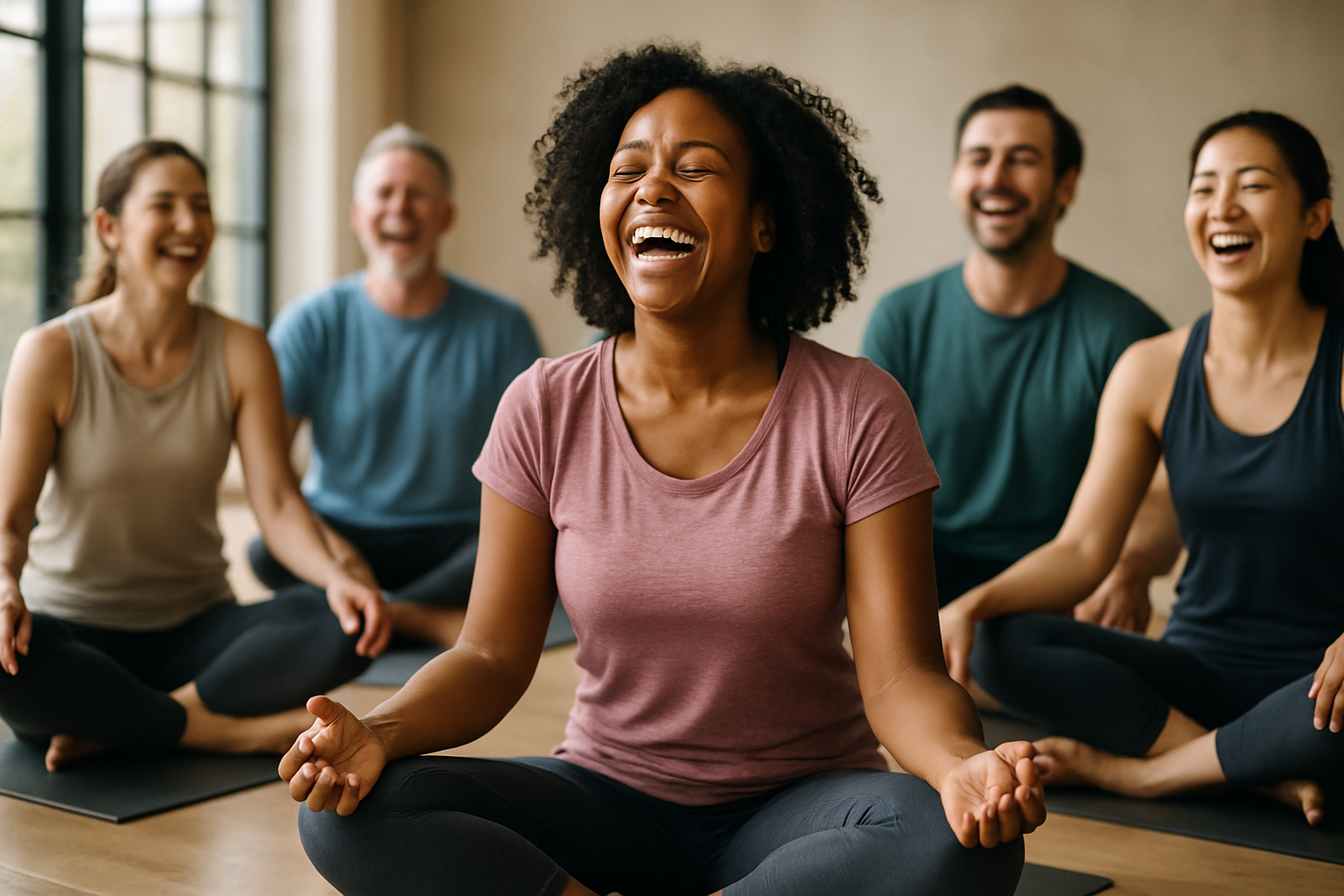Laughter Yoga: The Unexpected Fitness Phenomenon
In a world where fitness trends come and go, one unconventional practice has been steadily gaining ground, bringing joy and health benefits to practitioners worldwide. Laughter Yoga, a unique blend of laughter exercises and yoga breathing techniques, has emerged as a surprising addition to the wellness landscape. Born from the creative mind of Dr. Madan Kataria in Mumbai, India, in 1995, this innovative approach to fitness has sparked a global movement, challenging traditional notions of exercise and well-being. As more people discover the power of voluntary laughter combined with yogic breathing, Laughter Yoga clubs and sessions are popping up in parks, community centers, and even corporate offices around the globe. This article delves into the fascinating world of Laughter Yoga, exploring its origins, benefits, and growing impact on the fitness industry.

The Science Behind the Smile
While the concept of laughing for no reason might seem frivolous at first glance, the science behind Laughter Yoga is compelling. Numerous studies have shown that laughter, whether genuine or simulated, triggers the release of endorphins, the body’s natural feel-good chemicals. These endorphins not only elevate mood but also help reduce stress, lower blood pressure, and boost the immune system. The deep breathing exercises incorporated into Laughter Yoga sessions increase oxygen flow to the body and brain, enhancing overall well-being and mental clarity. Research published in the Journal of Alternative and Complementary Medicine has demonstrated that Laughter Yoga can significantly reduce symptoms of depression and anxiety, offering a natural and accessible alternative to traditional treatments.
A Typical Laughter Yoga Session
A Laughter Yoga session typically lasts between 30 to 60 minutes and follows a structured format. Sessions begin with gentle warm-up techniques, including stretching, clapping, and chanting. This is followed by a series of laughter exercises that combine acting and visualization techniques with playful, childlike behaviors. Participants might engage in exercises like “milkshake laughter,” where they pretend to mix and drink a delicious milkshake while laughing, or “lion laughter,” which involves stretching out the tongue and laughing from the belly. These exercises are interspersed with deep breathing techniques to help oxygenate the body and promote relaxation. The session usually concludes with a laughter meditation, where participants lie down or sit comfortably and allow natural laughter to flow freely.
Global Impact and Growing Popularity
Since its inception, Laughter Yoga has spread to over 100 countries, with thousands of Laughter Clubs established worldwide. Its simplicity and accessibility have contributed to its rapid growth, as it requires no special equipment or athletic ability. Corporate organizations have begun to recognize the benefits of Laughter Yoga in reducing workplace stress and improving employee well-being. Companies like Google, IBM, and Hewlett-Packard have incorporated Laughter Yoga sessions into their wellness programs, reporting improved morale and productivity. The practice has also found its way into schools, prisons, and retirement homes, demonstrating its versatility and universal appeal.
Challenges and Criticisms
Despite its growing popularity, Laughter Yoga has faced skepticism from some quarters of the medical and fitness communities. Critics argue that the practice lacks rigorous scientific evidence to support all of its claimed benefits. Some also question the authenticity of forced laughter and whether it can truly provide the same benefits as spontaneous, genuine laughter. Proponents counter that even simulated laughter quickly turns genuine in a group setting and that the physical act of laughing provides benefits regardless of its origin. As with any emerging wellness trend, more long-term studies are needed to fully understand the extent of Laughter Yoga’s impact on health and well-being.
The Future of Laughter Yoga
As the fitness industry continues to evolve, Laughter Yoga stands out as a unique and accessible form of exercise that addresses both physical and mental health. Its potential for improving social connections and combating loneliness in an increasingly isolated world has caught the attention of health professionals and policymakers alike. Some hospitals and healthcare facilities have begun to offer Laughter Yoga as a complementary therapy for patients dealing with chronic pain, cancer, and other long-term conditions. Looking ahead, the integration of technology may further expand the reach of Laughter Yoga, with virtual sessions and apps making it possible for people to practice from the comfort of their homes.
In conclusion, Laughter Yoga represents a paradigm shift in how we approach fitness and well-being. By combining the ancient wisdom of yoga with the universal language of laughter, this innovative practice offers a joyful path to better health. As more people discover the power of laughter as a form of exercise, Laughter Yoga is poised to play an increasingly significant role in the global wellness landscape. Whether as a standalone practice or as a complement to traditional fitness routines, Laughter Yoga reminds us that sometimes the best medicine is the simplest: a hearty laugh shared with others.





